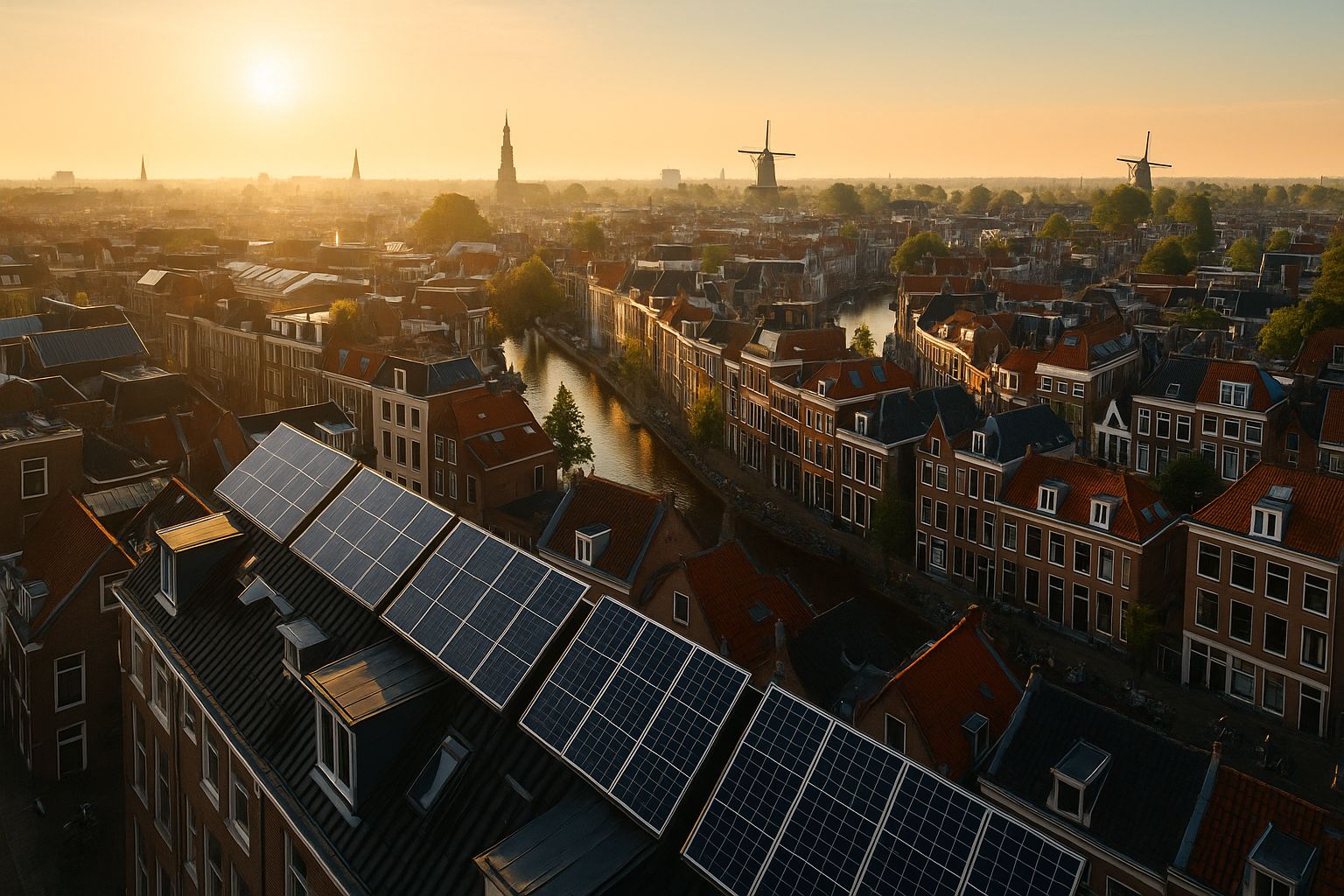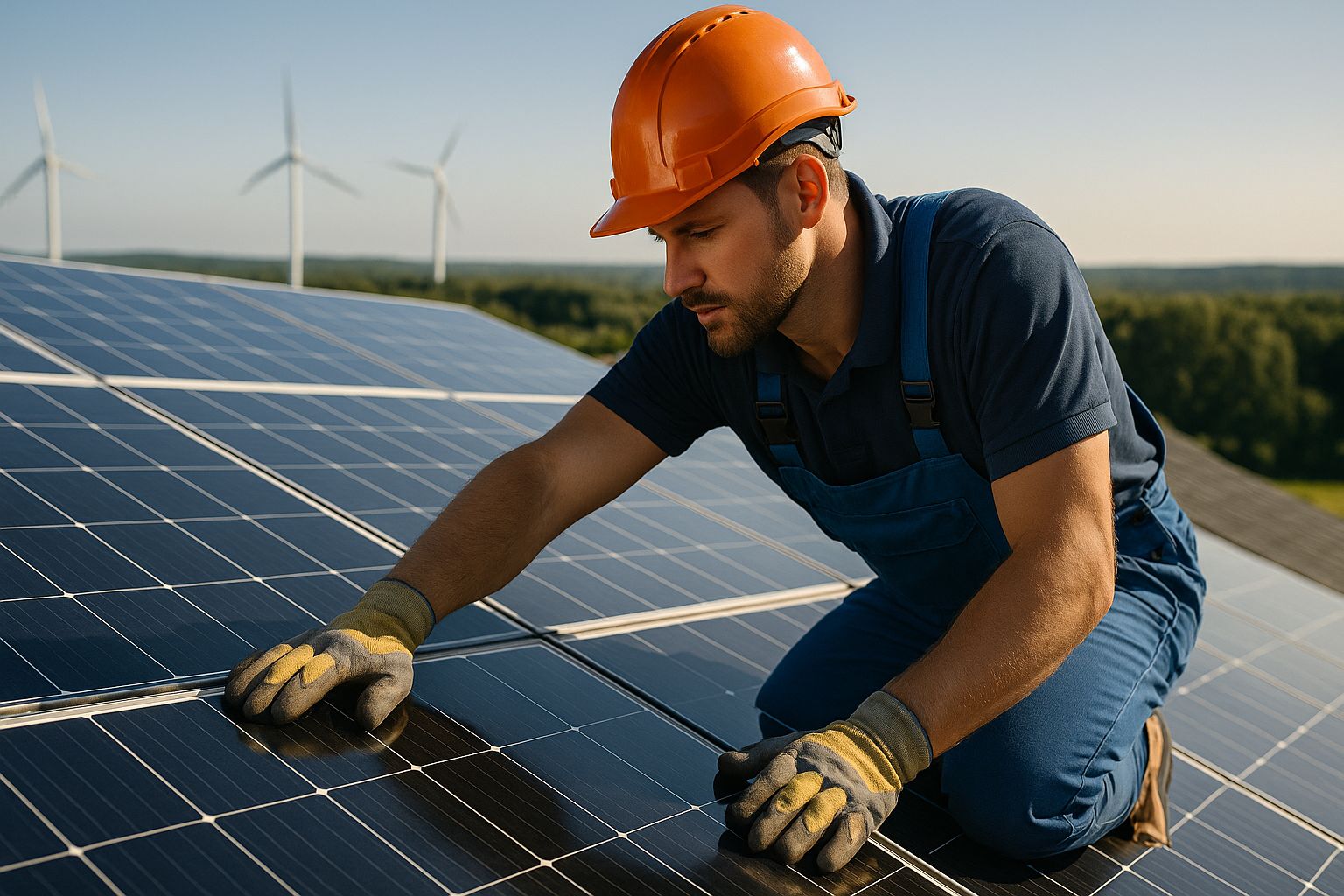- Green Glow
- Posts
- 🌱 How Solar Power Just Became Europe’s Brightest Energy Source ⚡☀️
🌱 How Solar Power Just Became Europe’s Brightest Energy Source ⚡☀️
Solar energy has officially become the EU’s largest electricity source, surpassing nuclear for the first time. Discover how innovation, policy, and technology helped Europe achieve over 50% renewable power — and what this means for the world’s clean energy future.
For the first time in history, solar energy has become the largest source of electricity in the European Union, surpassing even nuclear power. This remarkable milestone not only marks a turning point in Europe’s clean energy journey but also signals the dawn of a new era — one where the sun, not fossil fuels or uranium, drives the continent’s growth.
Table of Contents

A Record-Breaking Moment for Solar Energy
According to The Independent, June 2025 saw solar power generating 22% of the EU’s electricity, narrowly surpassing nuclear power at 21.6%.
Even more impressively, in the second quarter of 2025, renewables as a whole — including solar, wind, and hydro — produced over half of all electricity in the European Union.
This historic achievement reflects years of investment, innovation, and commitment from EU member states to shift toward sustainable energy sources.
The Driving Forces Behind Europe’s Solar Boom
Europe’s rapid solar expansion didn’t happen by accident. It’s the result of several overlapping forces working in harmony:
1. Falling Costs of Solar Panels
Over the past decade, the price of photovoltaic (PV) panels has dropped dramatically. Mass production, technological innovation, and global competition have made solar power not just cleaner — but cheaper — than traditional energy sources.
2. Government Policies and Incentives
The EU’s Green Deal and Fit for 55 package set ambitious goals to cut carbon emissions and achieve net-zero by 2050. Subsidies, tax incentives, and renewable energy mandates have made solar projects highly attractive for investors and homeowners alike.
3. Technological Efficiency
Modern solar systems now capture and convert more sunlight into electricity than ever before. Combined with energy storage advancements and AI-driven grid management, Europe’s renewable networks have become more resilient and reliable.
4. Public Awareness and Climate Pressure
Rising global temperatures, energy crises, and environmental activism have pushed both policymakers and citizens to prioritize clean energy. Solar rooftops have become symbols of sustainability in cities and rural towns alike.

The EU Countries Leading the Way
Several European countries have set remarkable examples of what’s possible with bold renewable energy policy:
🇩🇰 Denmark: 94.7% of its electricity now comes from renewable sources.
🇱🇻 Latvia: Achieved 93.4% renewable electricity generation.
🇦🇹 Austria: Close behind at 91.8%, powered largely by hydropower and solar.
🇱🇺 Luxembourg & 🇧🇪 Belgium: Both nations recorded the fastest year-on-year increases in renewable shares, largely thanks to new solar installations.
These leaders prove that when nations commit to a sustainable vision, transformation can happen quickly.
Managing the Solar Challenge: Intermittency & Storage
Despite solar’s success, challenges remain — especially around energy storage and grid balancing.
Solar generation peaks during the day and drops at night, but demand patterns don’t always match. To overcome this, the EU is investing heavily in battery storage, interconnected regional grids, and smart forecasting systems that balance supply and demand dynamically.
Technologies like lithium-ion storage, hydrogen energy, and thermal batteries are rapidly advancing, making 24/7 renewable energy increasingly possible.
Economic Growth Through Green Energy
The solar surge isn’t just an environmental win — it’s an economic opportunity.
Europe’s renewable energy sector supports hundreds of thousands of jobs, from panel manufacturing to installation and maintenance.
Solar energy independence also reduces exposure to volatile fossil fuel markets and foreign suppliers, strengthening Europe’s energy security.
Looking Ahead: A Solar-Powered Future by 2050
Experts predict that solar could become the world’s primary energy source by 2050, driven by continuous technological improvements and climate commitments.
Europe’s current success story shows how sustainable energy systems can scale — providing affordable, reliable power without sacrificing economic growth.
If the current pace continues, the “Age of Solar” won’t just be a European achievement — it will be a global transformation.

Conclusion
The EU’s record-breaking solar performance is more than a statistical milestone — it’s a beacon of hope.
By placing sustainability, innovation, and cooperation at the core of its energy policies, Europe has proven that the future truly can be powered by the sun.
As solar panels continue to spread across rooftops and landscapes, one truth shines brighter than ever:
The future of energy is clean, renewable, and brilliantly solar.
FAQs
Why did solar power become the EU’s main source of electricity?
Solar energy became the EU’s top electricity source due to a combination of falling solar panel costs, strong government incentives, improved grid technology, and increased public support for renewable energy. In June 2025, solar generated 22% of the EU’s electricity — surpassing nuclear for the first time.
Which countries are leading Europe’s solar and renewable transition?
Denmark, Latvia, and Austria are among the leaders, with over 90% of their electricity coming from renewable sources. Luxembourg and Belgium also recorded the fastest growth in solar generation across the EU.
How does solar power compare to other renewable sources in the EU?
While wind and hydro remain major contributors, solar energy has seen the fastest growth rate. Its share of total electricity generation has expanded dramatically over the past few years, driven by affordability and widespread installation.
What challenges does the EU face in solar energy expansion?
The main challenges include managing the intermittency of sunlight, expanding energy storage capacity, and modernizing the grid to balance fluctuating supply and demand across member states.
Will solar energy become the world’s primary power source?
Experts predict that solar could become the world’s main energy source by 2050, thanks to continuous cost reductions, better efficiency, and strong climate policies. The EU’s achievement serves as a model for other regions aiming for clean energy independence.
You May Also Like
External Links
Study: Centuries-old mercury pollution threatens Arctic wildlife
Tulane faces backlash for silencing researcher exposing pollution and racial bias
Trump’s EPA announces major rollbacks to power plant pollution limits
Michigan’s fight against Lake Erie pollution didn’t work. What happens next?
Trump administration grants air pollution exemptions to 66 coal-fired power plants
Follow Us:
X: https://www.x.com/greenglownews
Youtube: https://www.youtube.com/@greenglownews
Instagram: https://www.instagram.com/greenglownews
Sponsored Links